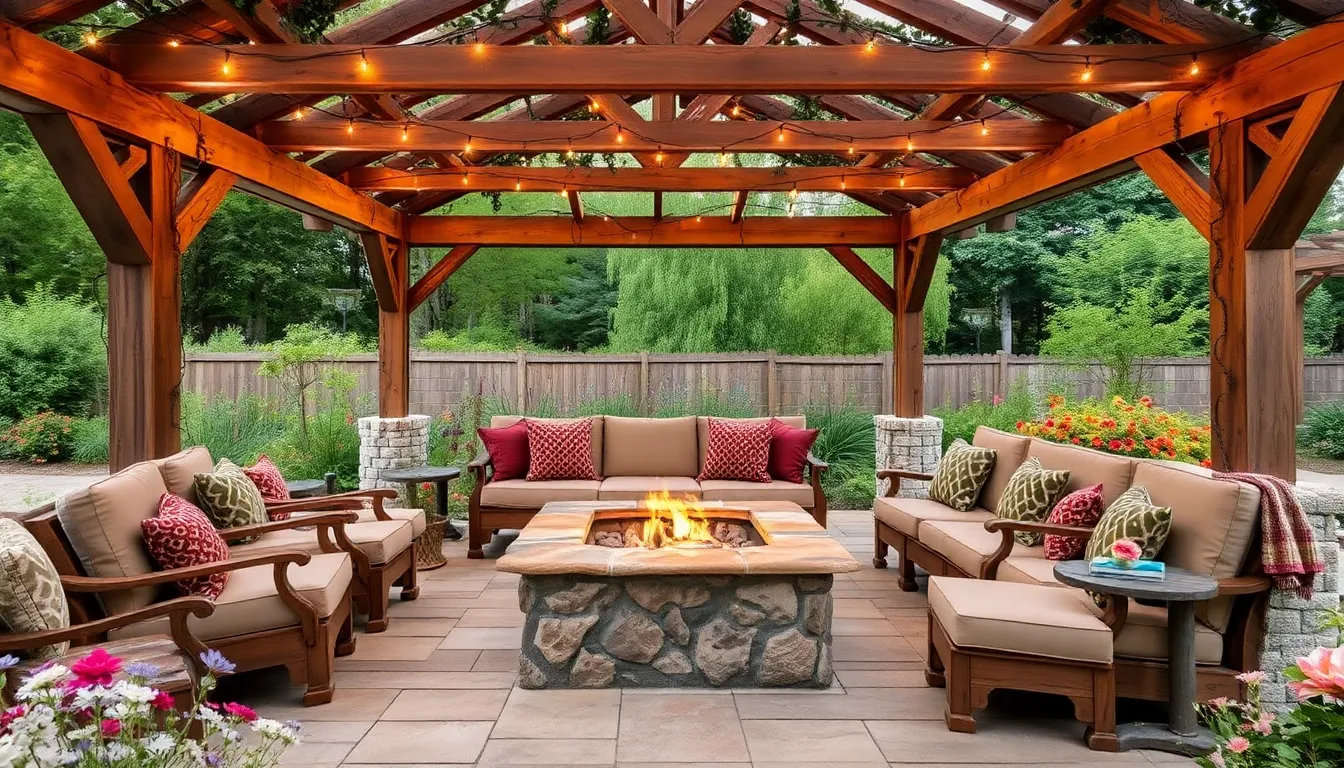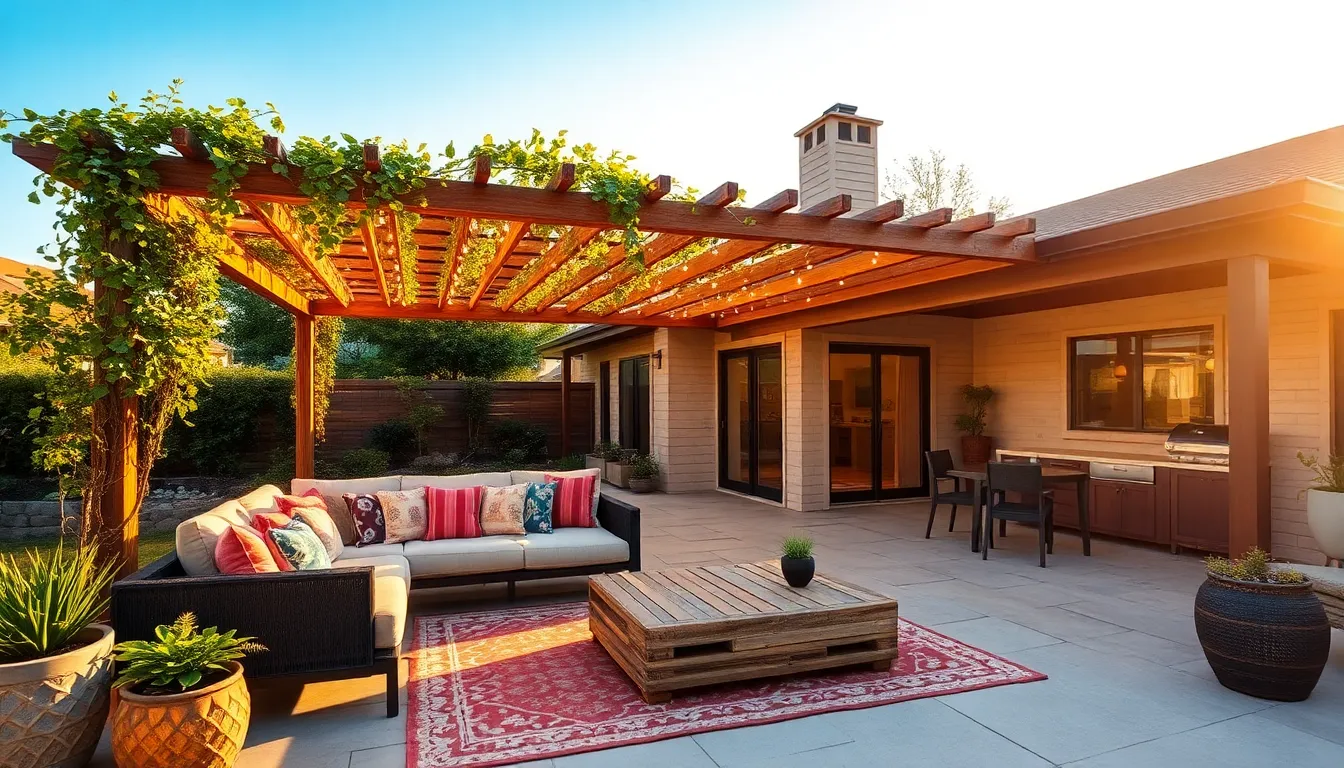Imagine stepping out into a space that seamlessly blends the charm of rustic design with the comfort of modern living, where the natural world meets artful architecture. Whether you’re a seasoned pro at outdoor makeovers or just beginning to explore the possibilities of your backyard, crafting a covered rustic patio can transform your outdoor experience. These havens of tranquility invite you to unwind beneath the shelter of nature-inspired structures, offering a perfect blend of functionality and aesthetic appeal.
In this article, we’ll guide you through nine inspiring covered rustic patios that promise not only to elevate the beauty of your home but also to enhance its usability across seasons. From choosing the right materials to arranging seating that encourages connection and relaxation, you’ll discover actionable insights to create a space that feels both timeless and uniquely yours.
Charming Wooden Beams and Rafters
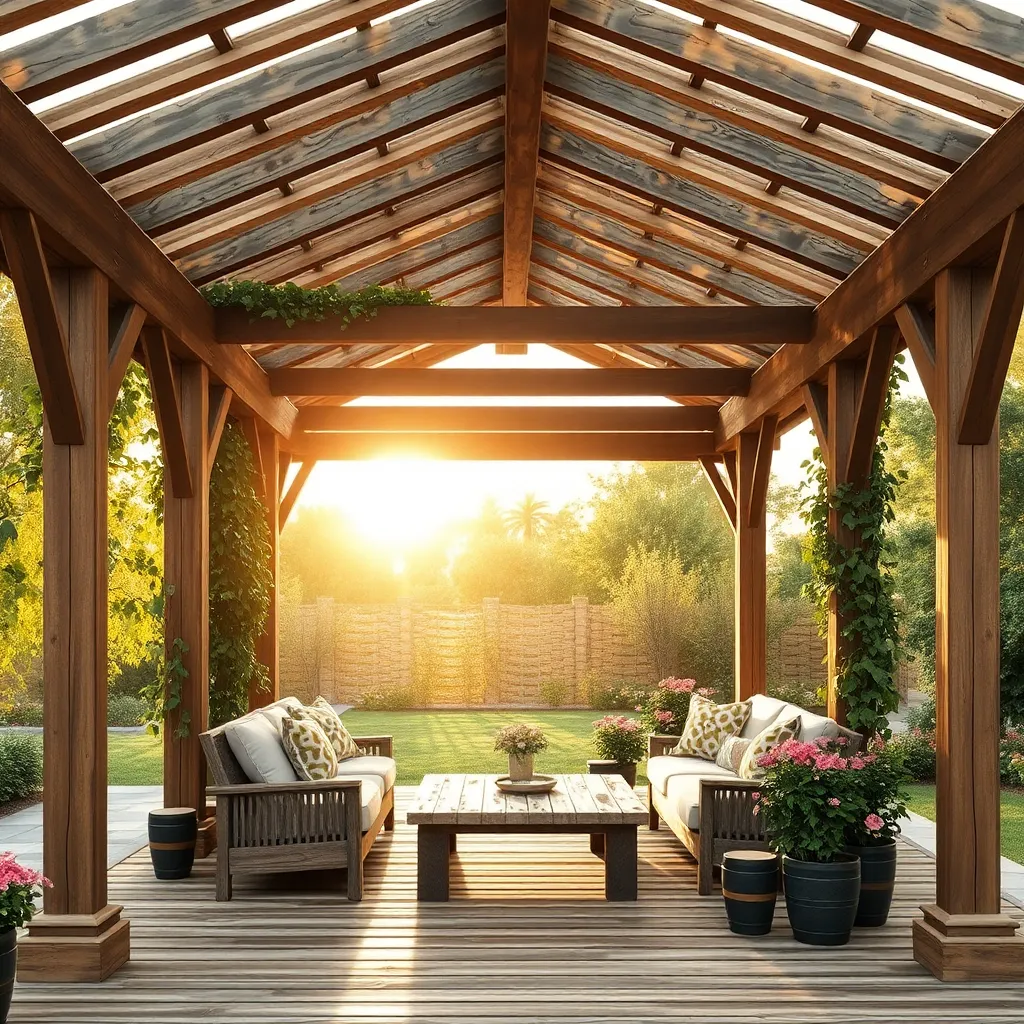
Creating a rustic patio with charming wooden beams and rafters can add warmth and character to your outdoor space. Start by selecting durable wood types like cedar or redwood, which are naturally resistant to decay and insects, ensuring your structure stands the test of time. To enhance the rustic charm, opt for a weathered finish or stain to highlight the wood’s natural grain and create a cozy, inviting atmosphere.
For a simple yet effective design, consider using beams that are at least 4 inches by 6 inches in size to provide both stability and a substantial look. Advanced DIY enthusiasts may want to incorporate cross-bracing for added support and aesthetic appeal. When installing the rafters, space them between 18 to 24 inches apart to ensure adequate support for any roofing materials you choose, such as polycarbonate panels or natural thatch, which can provide both shade and style.
Cozy Stone Fireplaces for Warmth
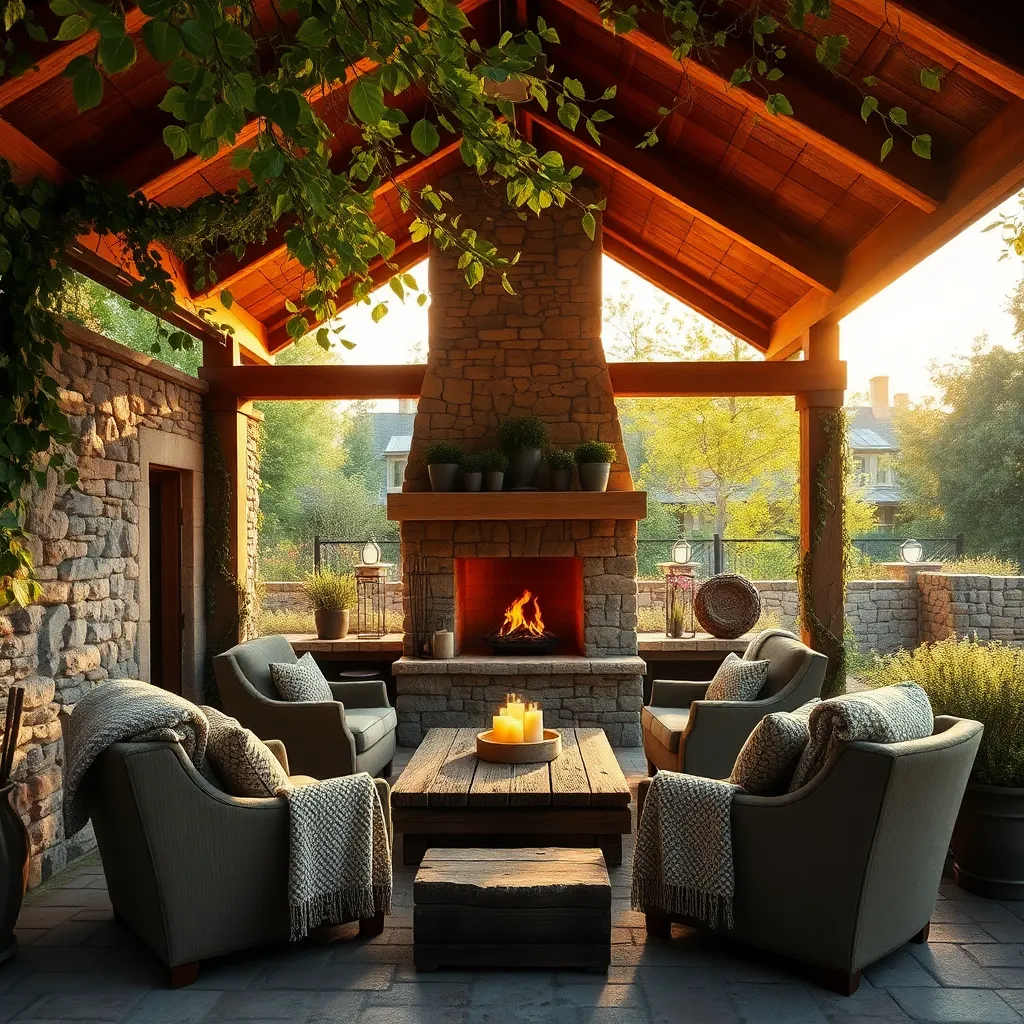
For those looking to add warmth and charm to their rustic patios, incorporating a cozy stone fireplace can be a game-changer. Opt for natural stones like granite or limestone, which are not only durable but also blend seamlessly with the outdoor environment. When planning your fireplace, ensure it is proportionate to your patio size; a standard height of 3-4 feet works well for most spaces, providing both function and aesthetic appeal.
Consider adding a hearth that extends 12-18 inches from the fireplace base for extra seating or to simply enjoy its warmth. For a touch of sophistication, integrate a mantel made from reclaimed wood to complement the rustic vibe. Ensure proper ventilation and check local regulations for outdoor fireplaces to guarantee safety and compliance. By focusing on these design elements, you can create a welcoming retreat that invites relaxation and conversation.
Inviting Wicker and Wood Seating
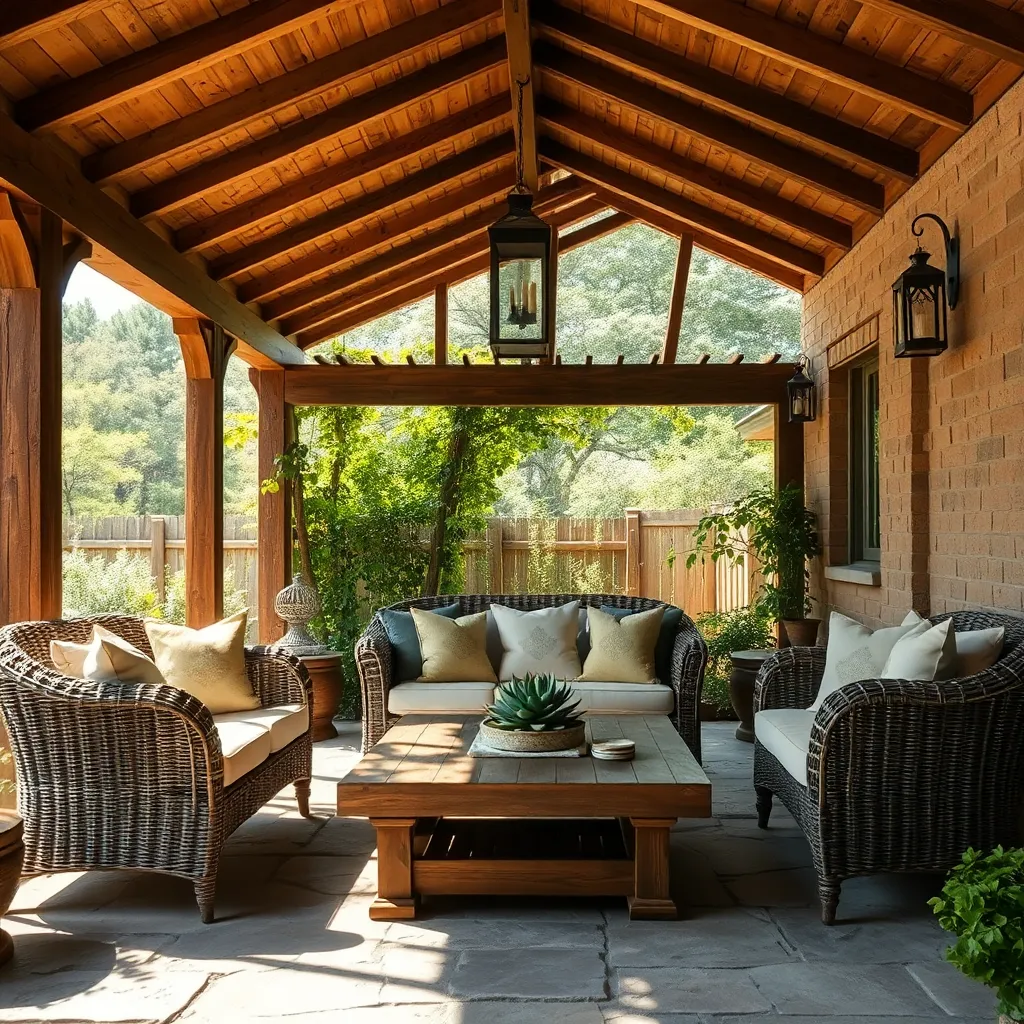
Transform your rustic patio into an inviting retreat with the addition of wicker and wood seating. Choose durable materials like weather-resistant wicker and treated wood to ensure longevity in all seasons. For beginners, start with a simple arrangement using a couple of wicker chairs paired with a wooden coffee table. This combination not only provides comfort but also enhances the natural, rustic feel of your space.
To elevate your seating area, consider adding cushions and throws in earthy tones to complement the rustic theme. Advanced DIY enthusiasts might explore crafting custom benches using reclaimed wood, which adds a personal touch and is environmentally friendly.
- Ensure your seating is positioned to take advantage of natural light and views.
- Keep the layout open by using folding or stackable pieces for easy adjustment and storage.
By following these tips, you can create a cozy and stylish outdoor seating area that draws family and friends together.
Natural Lighting with Rustic Appeal
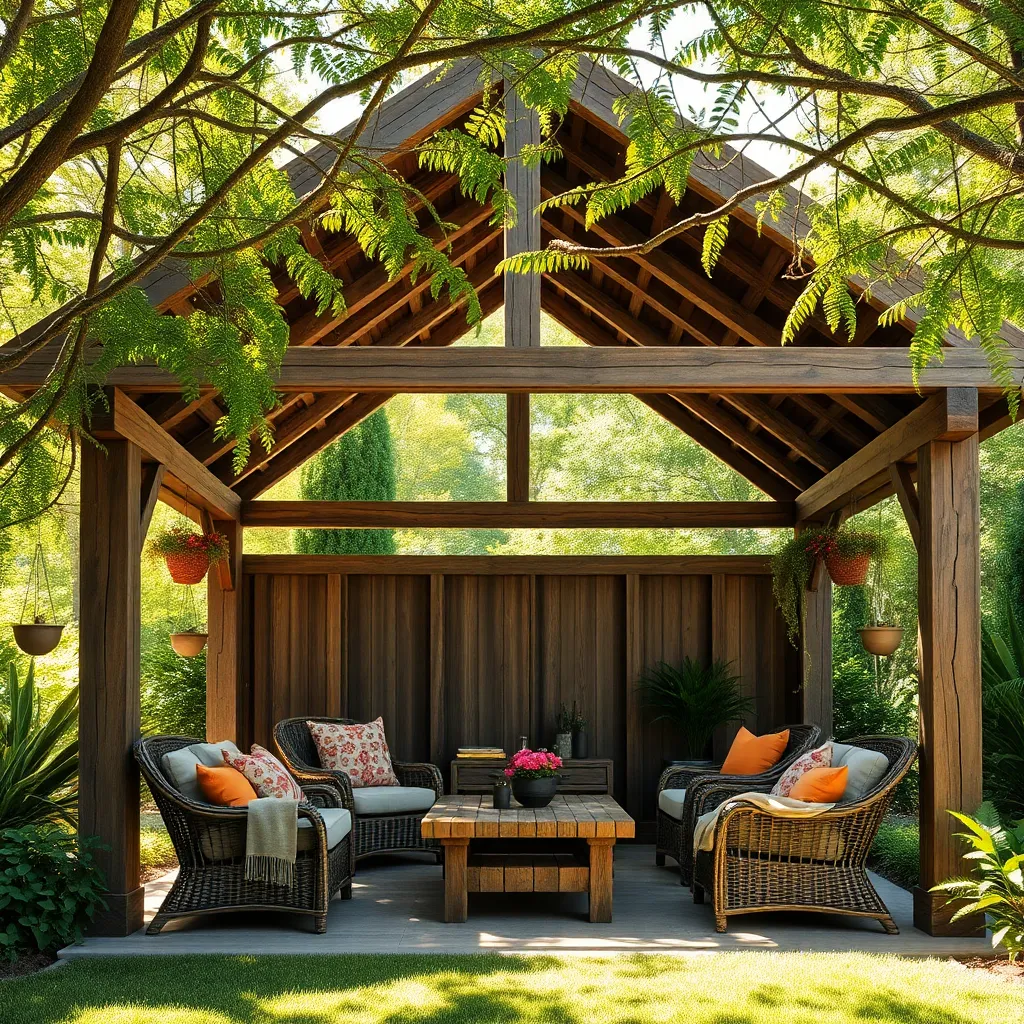
To enhance your rustic patio with natural lighting, consider incorporating a pergola with a lattice roof. This design allows sunlight to filter through, creating a dappled light effect that complements a rustic aesthetic. Opt for durable woods like cedar or redwood for the framework to withstand weather elements while adding a warm, natural hue. For an added touch, drape sheer outdoor curtains along the sides, which can be drawn for shade or left open to invite more light.
For a seamless blend with nature, strategically plant climbing vines like wisteria or grapevines to weave through the lattice, offering additional shade and a charming, organic feel. Beginner gardeners might start with faster-growing vines, while seasoned gardeners can experiment with seasonal bloomers to add color. Ensure your pergola is large enough to cover your seating area—typically, a 10×10-foot dimension works well for most patios. Enhance the ambiance with solar-powered string lights that charge during the day and offer a cozy glow by night.
Incorporating Vintage Outdoor Fabrics
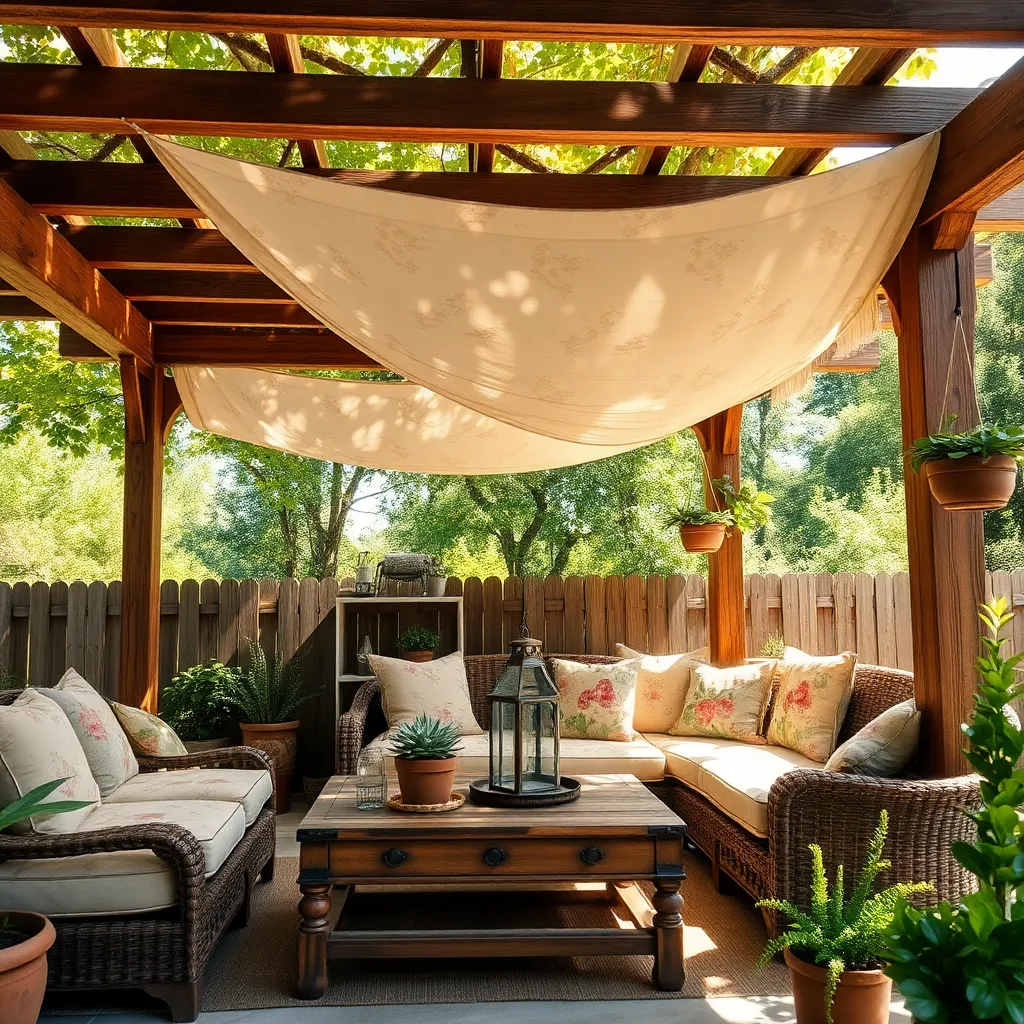
Incorporating vintage outdoor fabrics into your patio design can add an inviting and timeless appeal. Begin by selecting weather-resistant materials such as Sunbrella or acrylic-coated cotton that offer both durability and classic charm. For a cohesive look, consider using fabrics with rustic patterns like stripes, checks, or floral motifs, which can complement wooden or wrought iron furniture beautifully. Mix and match textures to enhance visual interest, and remember to choose fade-resistant options to maintain vibrant colors throughout the seasons.
For those looking to elevate their design, creating customized cushions and curtains can instantly transform your space. Measure your seating and surrounding areas carefully to ensure a perfect fit, and opt for removable covers to make maintenance a breeze. Advanced gardeners might explore incorporating vintage fabric swatches into DIY projects, such as creating fabric bunting or upholstering a vintage bench. These personal touches not only enhance the rustic aesthetic but also bring a unique character to your outdoor haven.
Durable Flooring for Rustic Patios

To create a truly rustic patio, selecting durable flooring is crucial for both aesthetic appeal and long-term functionality. Consider using materials like natural stone or reclaimed wood, which offer both rugged charm and resilience against the elements. For beginners, flagstone is an excellent choice due to its natural variations and ease of installation. Advanced gardeners might explore laying a mosaic of mixed stones or bricks to add a unique touch, ensuring that the foundation is adequately leveled and compacted to prevent shifting over time.
For those seeking more warmth underfoot, wood decking can offer a rustic feel with a bit of refinement. Opt for materials such as cedar or redwood, which are naturally resistant to decay and insects. Beginners should focus on proper sealing to extend the life of their wood floors, while more experienced homeowners might experiment with incorporating a herringbone pattern for visual interest. Remember to maintain a slight slope in the flooring design to facilitate water drainage, preventing potential water damage and ensuring the longevity of your rustic patio.
Integrating Greenery and Natural Decor
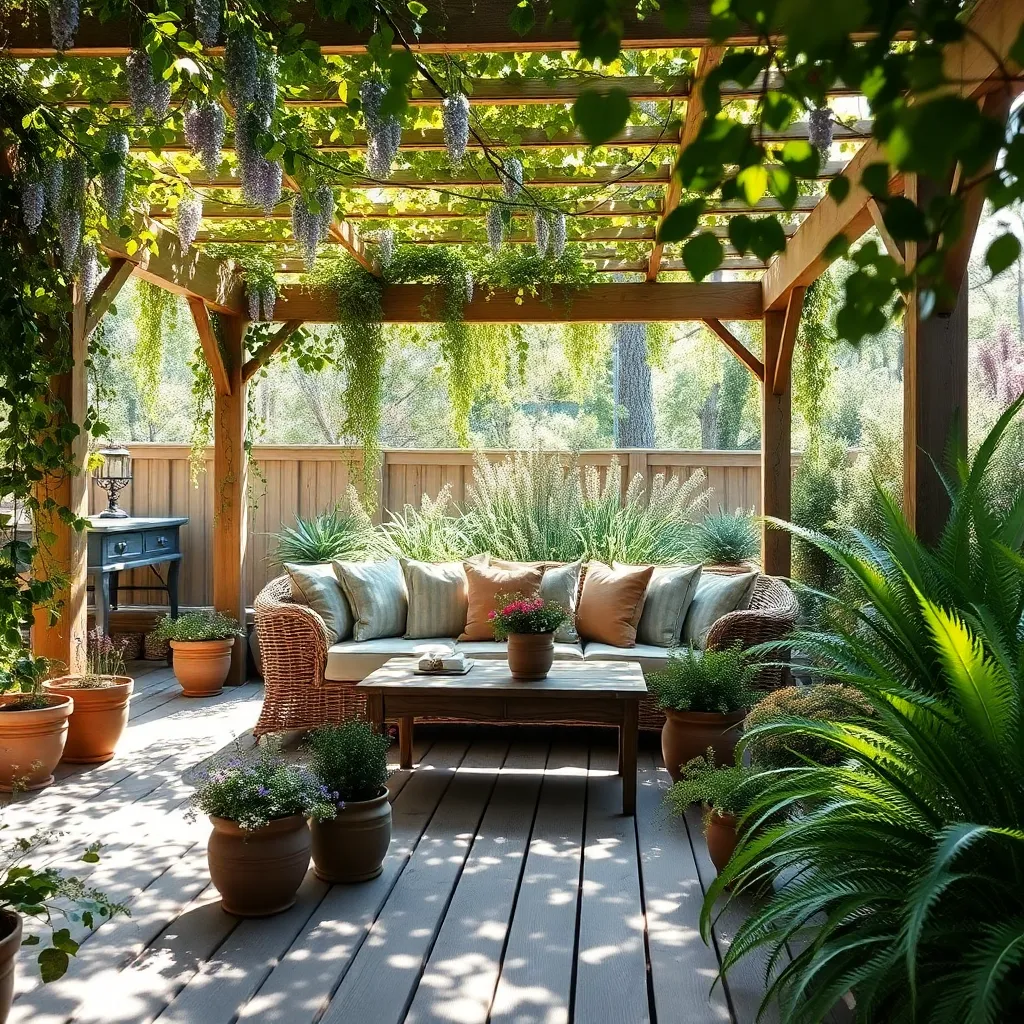
To seamlessly incorporate greenery and natural decor into your rustic patio, start by choosing plants that thrive in your climate and require minimal maintenance. Consider using native plants, as they are more likely to adapt well to local conditions. Vines like clematis or climbing roses can be trained to grow over pergolas or trellises, adding a lush and inviting feel. For a practical touch, use sturdy planters made from natural materials like wood or stone to complement the rustic aesthetic and ensure they have adequate drainage to prevent waterlogging.
For those looking to enhance their patio with advanced design elements, consider integrating a vertical garden. This can be achieved by installing a wall planter system or using hanging pots to maximize greenery without occupying much space. Select durable materials like galvanized steel or powder-coated metal for the structures to withstand outdoor conditions. Adding natural decor, such as driftwood or weather-resistant wicker furniture, can further enhance the rustic charm while providing functional seating options. Combine textures and materials to create a cohesive, inviting environment that encourages relaxation and enjoyment of the outdoor space.
Weatherproofing Your Rustic Haven
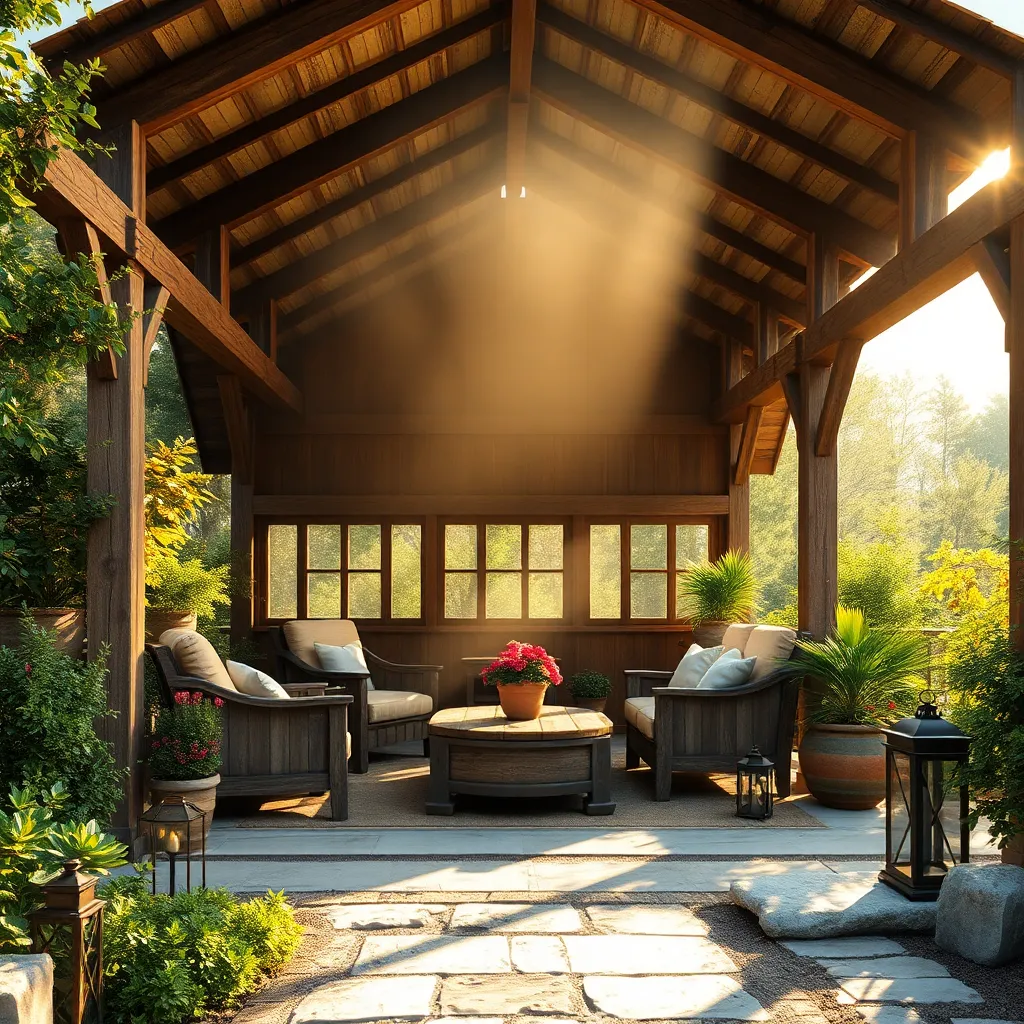
To ensure your rustic patio remains a cozy retreat in any weather, consider integrating weatherproof materials like pressure-treated wood or composite decking. These materials are not only durable but also resistant to rot and insect damage, making them ideal for outdoor use. Additionally, installing a clear polycarbonate roof can provide excellent protection from the elements while allowing natural light to filter through, maintaining the airy feel of your haven.
For those looking to enhance their shelter’s resilience, incorporating features such as retractable awnings or roll-up bamboo shades can offer flexible protection from sun and rain. Seal all wooden surfaces with a quality outdoor sealant to extend their lifespan and maintain their rustic charm. Advanced gardeners might consider adding a gutter system to efficiently manage rainwater, preventing water damage and promoting sustainable water use around the garden.
Enhancing Ambiance with Soft Lighting
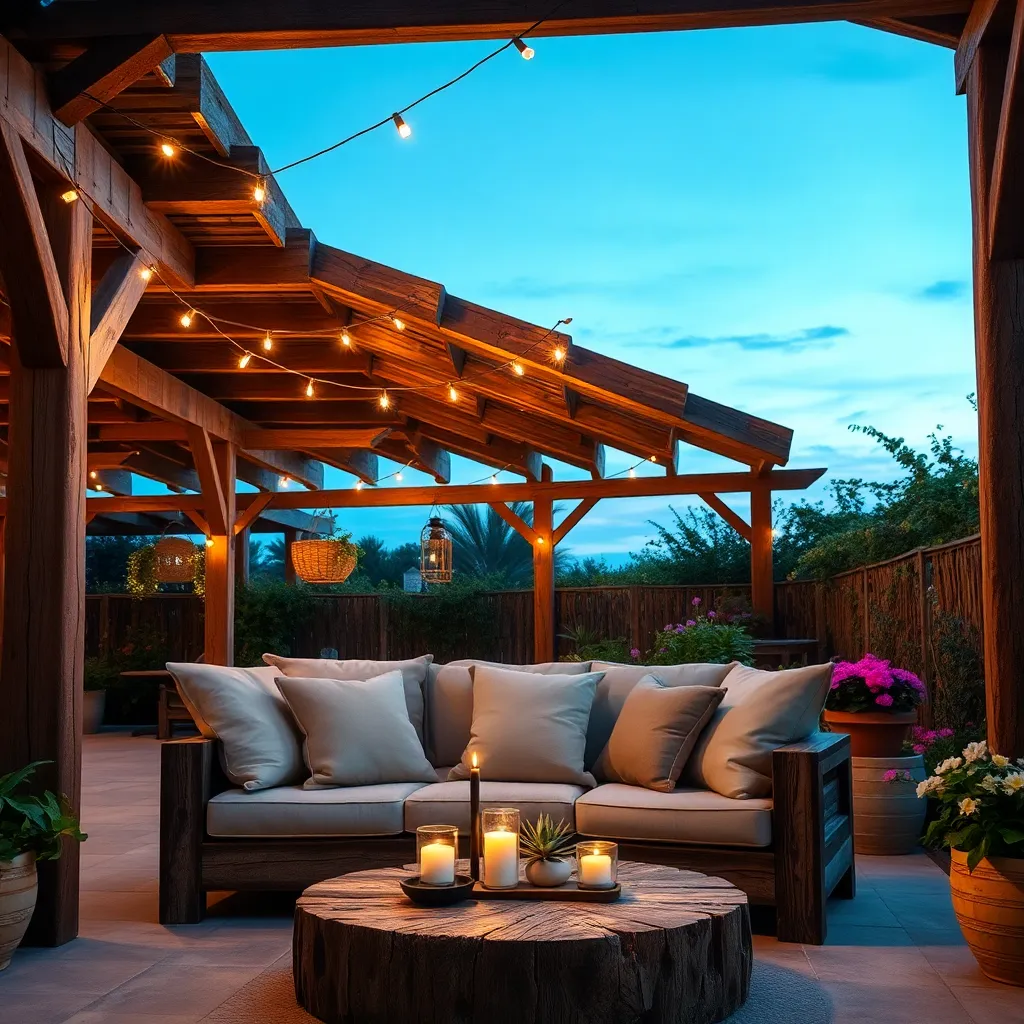
Transform your rustic patio into a cozy retreat by incorporating soft lighting. Start with string lights draped along the edges of your shelter or wrapped around beams, creating a welcoming glow. Opt for warm white LEDs for an inviting ambiance that mimics candlelight without the fire hazard, and ensure they are rated for outdoor use to withstand the elements. For a more sophisticated touch, consider adding lanterns or sconces crafted from weather-resistant materials like wrought iron or brass, which not only provide light but also enhance the rustic aesthetic.
For those seeking a more advanced approach, integrate dimmable fixtures to adjust the mood as needed. Installing recessed lighting under the patio cover can offer a sleek, unobtrusive option, while solar-powered path lights along walkways can highlight key areas without increasing your energy bill. Combine different lighting levels to create depth and interest, and always ensure that your electrical installations meet local safety standards. With these enhancements, your rustic patio will become a serene haven, perfect for evening relaxation or entertaining guests.
Conclusion: Creating Beautiful Outdoor Spaces
In exploring the charm of rustic patios, we’ve seamlessly woven nine key relationship concepts: communication, shared experiences, comfort, adaptability, personal space, compromise, togetherness, attention to detail, and nurturing growth. These concepts remind us that, much like a well-designed patio, a thriving relationship is built on a strong foundation, mindful enhancements, and ongoing care.
As an actionable next step, consider setting aside time this week to discuss with your partner which of these concepts resonate most with your relationship. Perhaps plan a cozy evening together on your own patio, where you can apply these insights in a setting that fosters open dialogue and connection.
To keep these valuable insights at your fingertips, be sure to bookmark this article. It will serve as a handy reference whenever you need a gentle reminder of the essentials that support a loving partnership.
Remember, the journey to relationship success is akin to cultivating a beautiful outdoor space—requiring patience, attention, and a willingness to grow together. With these insights, you’re well on your way to creating a partnership that’s as inviting and enduring as the most charming rustic patio. Save this guide and step forward, empowered to enhance your relationship every day.

